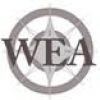Customer age as a determinant of preferences for information sources: Empirical analysis of a case from Central Europe
Vol. 15, No 2, 2022
|
František Pollák
Institute of Technology and Business in České Budějovice, České Budějovice, Czech Republic E-mail: frantisek.pollak@mail.vstecb.cz ORCID 0000-0001-6346-8629
|
Customer age as a determinant of preferences for information sources: Empirical analysis of a case from Central Europe |
|
Peter Markovič
University of Economics in Bratislava, Bratislava, Slovak Republic E-mail: peter.markovic@euba.sk ORCID 0000-0003-3870-8082 |
Abstract. The issue of finding effective approaches to marketing communications has been the subject of interest for the academic community as well as marketing managers for several decades. This study presents the results of an empirical analysis concerning the preferences of more than 5,000 Central Europeans aimed at identifying the customers´ preferred way of obtaining information depending on their age. The results of the analysis suggest that younger customers prefer online media, while middle-aged and older customers tend to prefer traditional information sources. The scientific contribution of the study is mainly in the results of cluster analysis, where we discover interesting mergers of customer clusters with a combination of preferentially similar age groups of customers. These newly discovered clusters can serve as a guide for more effective targeting of marketing communication to optimize the use of corporate resources and increase the overall competitiveness of companies operating in the Central European market. |
|
Received: July, 2021 1st Revision: April, 2022 Accepted: May, 2022 |
|
|
DOI: 10.14254/2071-789X.2022/15-2/18 |
|
|
JEL Classification: L26, M31, O30 |
Keywords: marketing communication, customer, efficiency, competitiveness, innovation |













